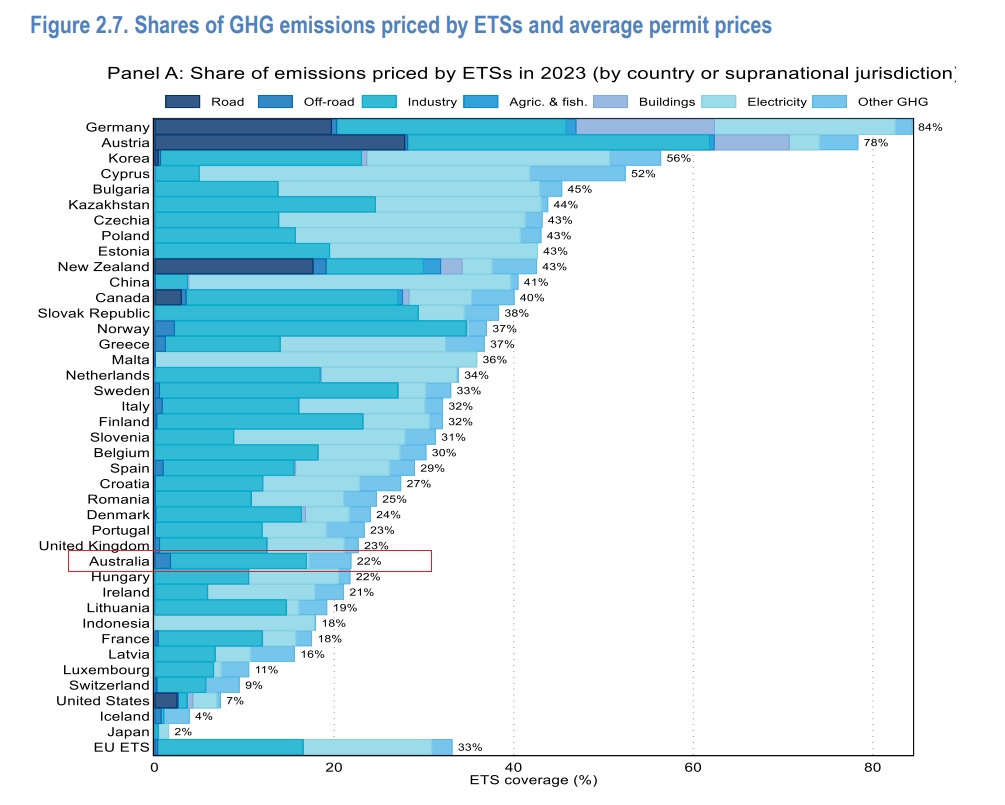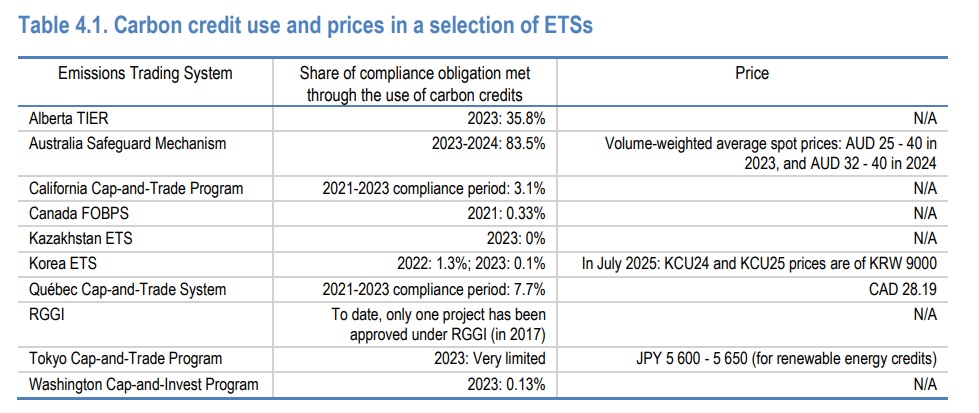The report demonstrates that Australia’s safeguard mechanism remains one of the least effective programs for reducing emissions, and relies the most on carbon credits.
Fri 14 Nov 2025 11.00

Australian Prime Minister Anthony Albanese and the Australian Opposition Leader Sussan Ley attend during procedures of the opening of the 48th Federal Parliament at Parliament House in Canberra, Tuesday, July 22, 2025. (AAP Image/Lukas Coch) NO ARCHIVING
On the day the Liberal Party consigned itself to policy irrelevance, a new report from the OECD shows that the pricing of carbon is growing across the globe. The OECD’s “Effective Carbon Rates 2025” highlights, however, that the Albanese Government cannot rest on any laurels.
The report demonstrates that Australia’s safeguard mechanism remains one of the least effective programs for reducing emissions, and relies the most on carbon credits.
Yesterday the Opposition Leader Sussan Ley told the media that “the Liberal Party will remove a net zero target from our policy, and if elected, we will remove the 43% 2030 target and its net zero by 2050 target from the Climate Change Act.” The Liberal Party’s policy is effectively that if emissions go down, fine; if not, who cares.
To be honest this has always been the Liberal Pary’s position, it’s just now being somewhat more honest.
When the Morrison Government lost power in May 2022, Australia’s actual emissions (excluding land use) were just 2.8% lower than at the end of 2005 and all of that drop occurred due to the ongoing fallout from the pandemic shutdowns:
The absurdity of the Opposition’s position to not have any policy to lower emissions however is highlighted by the OECD report released overnight into Effective Carbon Rates. The report evaluates the different carbon pricing regimes around the world – whether taxes, trading systems or programs like the safeguard mechanism, which has an implicit price on carbon.
It found that from 2018 to 2023 the number of countries with a carbon pricing regime of some sort rose from 15% to 27%. When including fuel excise taxes, the coverage increased from 33% to 44%.

Figure: Evolution of cap setting in ETS
And while the data only goes to 2023, the report notes that “carbon taxes and ETSs are currently in place in over 50 countries and their reach continues to expand”. It found that “since 2023, carbon pricing instruments have been introduced or are being considered in a dozen countries in Asia, Europe and Latin America and the Caribbean.”
The report, however, is not an opportunity for the Australian Government to gloat. Far from leading the world, Australia remains very much at the rear when it comes to pricing carbon.
Among 41 nations and jurisdictions the OECD modelled, Australia’s safeguard mechanism had the 12th lowest coverage. It covered just 22% of all emissions, compared to Canada’s Carbon Tax and Emissions Trading Scheme covering 40% of its emissions, Korea’s covering 56% and Germany’s covering an astonishing 84%.

Figure: Share of emissions by ETS in 2023
And across the 78 countries in the report, Australia’s effective price on carbon was well down the lower end of the scale:

Figure: Average Effective (Marginal and Average) Carbon Rates by country
More worrying however was the finding by the OECD that the emissions “reductions” due to the safeguard mechanism are overwhelmingly from carbon credit purchases not actual falls in emissions.
The report found that 83.5% of compliance with the Safeguard Mechanism came though “the use of carbon credits”. By contrast, only 3.1% of compliance with California’s cap and trade program involved carbon credits and 0.1% of Korea’s ETS in 2023.

Table: Carbon credit use and prices in a selection of ETSs
Clearly the Liberal Party have abandoned any sense of reason and reality by abandoning the net zero by 20250 emissions target. And the OECD report shows they are heading in the opposite direction to the rest of the world.
But the LNP’s irrelevancy to policy debate should not reduce the pressure on the Albanese Government to improve its policy for reducing emissions. The Safeguard Mechanism remains a poor policy. It covers few emissions across our economy compared to other schemes in place in similar countries, and prices carbon relatively cheaply. This reduces incentive for companies to reduce emissions.
Even worse, the way the Safeguard Mechanism operates, companies know they can continue to increase their emissions and merely buy carbon credits to “offset” those emissions.
Until Australian Governments ban the opening of new coal and gas mines and introduce a true and significant price on carbon that covers a much broader scope of the economy, we shall continue to lag behind the rest of the world.